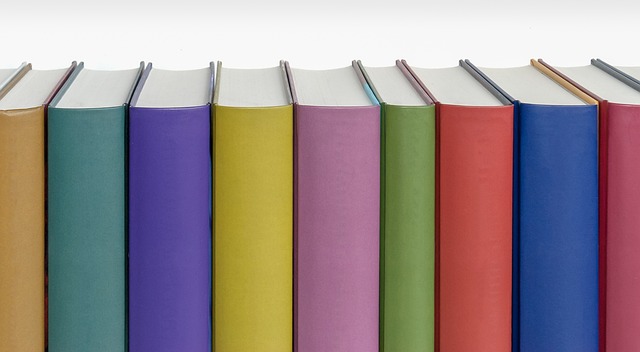Table Of Content

We offer free insurance verifications and explanations of benefits. Please have your insurance information ready when booking your online appointment to help us expedite your experience. For more information about spine related conditions and treatments, visit the UCLA Spine Center. A paperback of 100 pages needs a spine of 1/3″, while 200 pages need 2/3″. For example, we’ll go with book wove 80gsm for our paper quality. For quality formatting that will look amazing and create a smooth reading experience, please visit this link or contact us here.
How To Self-Publish a Book in 8 Steps (2024) - Shopify
How To Self-Publish a Book in 8 Steps ( .
Posted: Fri, 02 Sep 2022 12:32:46 GMT [source]
Examples of well-designed spine covers
The book spine is an often underestimated yet critical element in the world of publishing and design. It serves as a vital bridge between the aesthetic appeal and functional necessity of a book. But in this busy era, when hundreds of books are sitting on shelves, most readers and buyers will judge the books by their spine covers. In the book marketplace, in libraries, at homes, and other book spots, they appear spine-forward so it’s the only thing that can convince a person to check your book.

Formula for calculating the spine thickness of a paperback book:
Remember, your book spine is the first thing people see when they pick up your book, so make sure it reflects the quality and value of the content inside. Picking through our library at home, I arranged a shelf of books that demonstrate some of the best and worst of spine design. Here they are, with comments about how well they do their jobs. Text size is typically measured in points, with the height of the text being a crucial factor in determining its legibility and visual appeal on the spine. It’s essential to design the cover as a single, complete file, taking into account the spine’s position relative to the front and back covers.
Experienced Authors at Your Service
Analyze these design elements and ask yourself, which one of them would intrigue you if you were browsing books on a shelf? The spine cover is not just about adding a few colors, graphics, and text together – it is an art and a science. Whether you are a publisher selling someone else’s book or a writer selling your own, you are doing so for your audience, the intended readers. Hence, you must truly understand your target audience to produce exactly what they want. In modern, data-driven, and customer-centric marketing approaches, you need to incorporate your audiences’ preferences in each aspect of your book design.
This happens by providing specific information about the book that the reader is looking for. Once you have done background research and have selected the theme, layout, fonts, and information, the next step is to sit down and finalize your book spine design for printing. In bookstores or libraries, the spine is often the only visible part of a book, making it a critical factor in catching the attention of potential readers. It can help your book stand out from the competition and catch the attention of potential readers. The spine is an essential part of a book’s cover design as it has to be visually appealing and convey important information about the content within.
Struggling To Write And Publish Your Book Easily?
When using a solid background, you should select an eye-catching color already featured on the front or back cover or another color that complements the design. That’s why designing a proper spine size with DIY tools can be challenging. It’s better to turn to a professional book cover designer with relevant experience who can quickly and correctly calculate the spine size.
Is a Los Angeles-based nationally renowned orthopedic spine surgeon. He is an expert in motion preservation surgery, minimally invasive procedures, degenerative disorders, and complex spinal revision surgery. When appropriate, he focuses on outpatient surgical intervention to safely return patients to their families.
Shelf Aesthetics and Reader Appeal
Books are tactile objects, so make your text clear and easy to see from a distance – you want the buyer to pick your book up and hold it. You should know that eBook formatting is nothing to take lightly. Improper formatting can negatively impact the reading experience and may even turn readers away from your book. However, understanding these visual cues helps readers make informed choices about what to read. Ideally, there’s a ⅛” safety space framing the type in case the spine slides forward or back during binding.
Cover designers will ensure that your spine fits your book perfectly. So, once you’ve decided upon the information you want to include, it’s time to consider the overall cover layout and design of your book spine. When designing a book spine, there are key elements to consider to represent the content inside effectively. For further reading and resources on related to print book cover design, check out the following.
Explore the Intricacy and Elegance of Restoring Century-Old Books as Told by Sophia Bogle — Colossal - Colossal
Explore the Intricacy and Elegance of Restoring Century-Old Books as Told by Sophia Bogle — Colossal.
Posted: Sat, 20 Jan 2024 08:00:00 GMT [source]
The spine usually only duplicates the book’s title and author’s name. You can add decorative elements but refuse to include a complete front cover image. The chosen colors should resonate with the book’s genre and the intended emotional response from the reader.
For most book interiors, this is minor because the pages are white or cream and the contents (your story) are nowhere near the edge of the page. Printers achieve this by printing the pages oversized, and then trimming every page to the exact same size. The stack of pages, called a book block, is cut down precisely to get that clean finish. This design works well for books that have a minimalist aesthetic, like poetry collections and design books. We hope this article will get you started designing the spine for your own book with confidence. Copy includes nothing more than five reviews and endorsements.
Book spines are crucial in helping us identify and locate a specific book. Imagine a library or a bookshop where all the books are shelved without their spines visible – finding the book you’re looking for would be quite a challenge. The design, typography, and even the color of the spine work together to make a book stand out on the shelf, ensuring it catches the reader’s eye. Crafting the perfect book spine is more than a design afterthought—it’s a critical piece in presenting your work and drawing readers in.
So you can include more information, imagery, or a larger font on your hardcover copies. And since the spine width is determined by the number of pages in your book, books with more pages have a bigger spine size. One of the best ways to get started is to look at book spine designs from other authors and publishers for inspiration. Study what you like and don’t like, and then use that information to guide your design process. Designing spines for books with a lower page count presents unique challenges due to their narrow width.

No comments:
Post a Comment